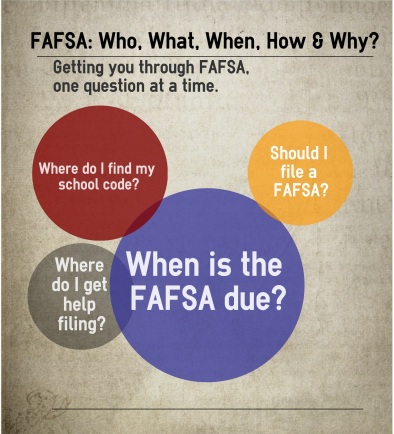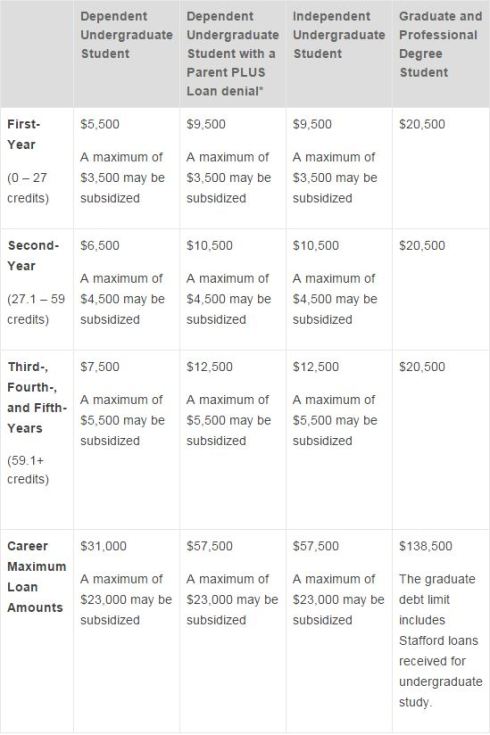From WiseBread New Graduate Help Center: Reyna Gobel, Student Loans Expert

Photo By WiseBread
In the past few years, the federal government introduced several new student loan payback plans that base payment amounts on borrowers’ income, aimed at helping these borrowers pay back their loans without being crushed by debt. Perhaps the most enticing of these is the Pay As You Earn plan, which, for many borrowers, provides the lowest monthly payments of any plan — and, if you qualify, you can even have the remainder of your loans forgiven after 20 years.
There are some criteria for qualifying. Unlike the other income-sensitive plans, Pay As You Earn borrowers had to be student-loan free as of October 1, 2007 and had disbursement of loans on or after October 1, 2011. You also have to demonstrate a “partial financial hardship” — but, as you’ll learn below, that doesn’t necessarily mean that you can’t qualify for Pay As You Earn if you have a job — even a high-paying one.
Read on to learn about the pros and cons of the plan, discover if it’s right for you, and find out how to apply.
What Is Pay As You Earn?
Pay As You Earn is a federal student loan repayment plan that reduces your federal student loan payments based on financial hardship. The plan was developed as a way to help those struggling with sizeable student loan payments, and it went into effect December 21, 2012.
Benefits of Pay As You Earn
There are several benefits to the Pay As You Earn repayment plan.
How Much You Pay
For many people with federal student loans, Pay As You Earn is the payment plan with the lowest monthly payments. When you’re on this plan, your payments are calculated as 10% of your discretionary income divided by 12. (More on how that discretionary income is calculated a bit later.)
Interest Subsidies and Capitalization Breaks
In addition to lowering your monthly payments, the Pay As You Earn plan also has other benefits. First of all, if you had subsidized federal loans (the kind where the government pays your loan interest for you when you’re in school), for the first three years that you’re on the Pay As You Earn plan, the government will continue providing an interest subsidy. They won’t pay for all of your interest, but if the amount you pay each month doesn’t cover all of the interest your loans are earning, the federal government will pay any leftover interest.
Also, according to the government, when you have a partial financial hardship, “…interest that accrues but is not covered by your loan payments will not be capitalized, even if interest accrues during a deferment or forbearance.” Basically, this means that any interest accrued will not be added to the principal of the loan, and thus you won’t be charged interest on the interest. And, furthermore, “the total amount of interest that capitalizes while you are repaying your loans under the Pay As You Earn plan is limited to 10% of your original principal balance when you begin paying under Pay As You Earn.”
Loan Forgiveness
If you always pay in full and on time and have a partial financial hardship every year, you can have the balance of your loan forgiven after 20 years. And if you work full-time in public service, you may qualify for the Public Service Loan Forgiveness program, where the balance of your loans can be forgiven after just 10 years.
How to Figure Out if Pay As You Earn Works for You
Unfortunately, not everyone can use the Pay As You Earn plan. Here’s how to figure out if you qualify.
Do You Demonstrate a “Partial Financial Hardship”?
In order to qualify for Pay As You Earn, you need to have what the federal government calls a “partial financial hardship.” The Office of Federal Student Aid defines this as:
You have a partial financial hardship if the monthly amount you would be required to pay on your eligible federal student loans under a 10-year Standard Repayment Plan is higher than the monthly amount you would be required to repay under Pay As You Earn.
That definition doesn’t really say anything about what the payment would be. So, let’s dig a little deeper.
As I mentioned earlier, Pay As You Earn is 10% of your discretionary income. You might be familiar with the idea of “discretionary income” as the money you have leftover when you’re done paying your monthly bills. In the case of Pay As You Earn, it’s a similar concept, but the government calculates your discretionary income as your income minus 150% of the poverty guidelines for your family size.
Even if you think you might not qualify by reading that definition, you might — because your debt-to-income ratio also matters. For example, if you make $100,000 a year but owe $200,000 in loans, you can qualify for income-based repayment.
The best way to figure out if your income and debt-to-income ratio allow to apply for the plan is to plug your information into this calculator.
Do You Have the Right Kind of Loans?
Like all federal loan repayment plans, this program only applies to federal student loans. Specifically:
- Direct Subsidized Loans
- Direct Unsubsidized Loans
- Direct PLUS Loans made to graduate or professional students
- Direct Consolidation Loans without underlying PLUS loans made to parents
And the following loans cannot be repaid with the Pay As You Earn plan:
- Direct PLUS Loans made to parents
- Direct Consolidation Loans that repaid PLUS loans (Direct or FFEL) made to parents
- FFEL Program loans
- Private education loans
An additional note on FFEL loans — if you have FFEL loans, which are provided through a federal program but by private banks, the loans cannot be paid back with the Pay As You Earn program. But if you also have Direct Loans you’d like to use the Pay As You Earn plan for, the amount of your FFEL loans can be taken into account when figuring out if you have a partial financial hardship. Moreover, FFEL loans can be consolidated with direct loans. When this happens, the new combined direct loan can be repaid under Pay As You Earn (provided the underlying FFEL and direct loans were disbursed on or after October 1, 2007).
Did You Get Your Loans During the Right Time Period?
In addition to the above criteria, your loans also have to fall within specific time constraints. You must:
- Be a new borrower (i.e., have no outstanding student loan balances) as of October 1, 2007
- Have received loan disbursement on or after October 1, 2011 (meaning that your loan funds were provided to your school on or after that date)
Are Your Loans Properly Consolidated?
If you consolidated loans that do qualify with Parent PLUS loans, which don’t, this consolidated loan is not eligible for the Pay As You Earn plan.
Estimating Your Payments and Applying
If you fit all of the criteria listed above, visit the Office of Federal Student Aid’s Pay As You Earn payment calculator to find out how much you would owe each month. Then, if you have any questions before signing up, contact your student loan servicer. Finally, when you’re ready to apply, you can do so by logging in at studentloans.gov.
Pros to Pay As You Earn
To recap what we’ve discussed so far, if you qualify, there are several great reasons to consider the Pay As You Earn plan:
- Depending on your income, your payments might be less than any other payment plan — and, at the very least, they’ll never be more than they would be on the standard 10-year repayment plan.
- You can have the remainder of your loan forgiven after 20 years of on-time payments, or after 10 years with the Public Service Loan Forgiveness program.
- If you have a subsidized loan, you will continue to get interest subsidies for three years if your monthly payments do not cover all of the interest you owe.
Cons to Pay As You Earn
There are some downsides to the plan.
- Pay As You Earn won’t work for everyone. If you can’t demonstrate a partial financial hardship as defined by the Office of Federal Student Aid, you can’t qualify.
- You have to provide updated income and family size information every year to confirm that you still demonstrate a partial financial hardship.
- If you no longer demonstrate a partial financial hardship, you can choose the standard repayment plan and still potentially qualify for some loan forgiveness if you still have a balance after 20 years of combined Pay As You Earn and standard payments.
- Even if your loan is forgiven after 20 years, you may have to pay taxes on the amount that was forgiven. At this time, it is unclear whether or not congress will create an exception to this before any borrower has to pay these taxes.
- Since paying less per month could mean you’ll extend the life of the loan, you could also owe more in interest. If you continue to qualify for Pay As You Earn, this is not a problem. But if you reach a point where you don’t qualify, your interest will capitalize, and you could end up paying more overall than you would with a standard repayment plan.
About that last point – here’s an example of what I mean. Say that borrower named Joanne has $30,000 of unsubsidized student loan debt with an interest rate of 6.8%. Her income for the first three years out of college helps her qualify for a Pay As You Earn payment of $60 a month, which doesn’t even cover interest. Since she doesn’t have subsidized loans, the government doesn’t pay the additional interest, and she still has her $30,000 student loan debt left. Now, in addition to that initial debt, she has to pay another approximately another $3,000 in interest accumulated. If her income increases enough, she will never be able to have loan forgiveness, because she’ll pay off her loan well before 20 years.
How Pay As You Earn Compares to Other Repayment Plans That Consider Income
Pay As You Earn isn’t the only option for paying back your student loans. There are also other income-related plans to consider. One of the biggest differences with all of these plans is that, while you’ll almost certainly pay less on Pay As You Earn, these plans work for loans no matter when you got them. So, for example, if you received disbursement of loans before October 1, 2011, those loans would not qualify for Pay As You Earn, but could qualify for the plans below.
Income-Based Repayment (IBR)
Under IBR, you also need to demonstrate a partial financial hardship. Your payments are locked in as 15% of your discretionary income (compared to Pay As You Earn’s 10%), and you can qualify for loan forgiveness after 25 years.
Income-Contingent Repayment (ICR)
Payments under ICR are based on your gross annual income, family size, and loan amount; and they change accordingly each year. Loan forgiveness is available after 25 years.
Income-Sensitive Repayment (ISR)
In this plan, your loan amount is based on your income. The plan is only available for 10 years, and there is no loan forgiveness.
What You Should Know After You’ve Signed Up for Pay As You Earn
There are a few things to be aware of after you’ve signed up for Pay As You Earn.
You Must Make Your Payments Every Month and on Time
If not, you risk defaulting and not being eligible for loan forgiveness.
You Have to Reapply Every Year
And, if you no longer demonstrate partial financial hardship, your monthly payment will change to a “standard” payment amount.
Any Questions?
If you have any questions, ask your loan servicer, or feel free to get in touch with me — I’m only a tweet away at @reynagobel.
Reyna Gobel is a writer, author, public speaker, and student loans expert. Her financial advice appears on Wise Bread’s New Graduates Help Center, in her video course How to Repay Federal Student Loans, in CollegeWeekLive newsletters and keynotes speeches, and in her audiobook How Smart Students Pay for School, now in its second edition. Be sure to check out her website for more helpful information on repaying your student loans.
Tags: Pay As You Earn, repayment, Reyna Gobel, Student Loans, WiseBread

 Get in the habit of putting a portion of your paycheck in savings now, before you start paying back your loans. This will force you to make a budget and spend less every month, so when the time for repayment comes, it will be easier to part with this percentage of your paycheck.
Get in the habit of putting a portion of your paycheck in savings now, before you start paying back your loans. This will force you to make a budget and spend less every month, so when the time for repayment comes, it will be easier to part with this percentage of your paycheck.




















